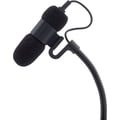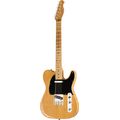According to Wikipedia:
[i]"A cluster is a set of simultaneous joint notes forming a "cluster sound" more or less dense."[/i]
It seems clear that this definition can be considered from many different angles. Due to its composition, such a chord is actually a cluster sound. Indeed, on a staff, a cluster with multiple notes very much looks like a bunch of grapes as the notes composing the chord are "stuck"!
Musicology tells us that a "cluster" is a chord consisting of intervals of seconds, whether major or minor. (A major second is an interval of a whole step while a minor second is an interval of a half step only).
Example: C-D-E-F (separated by an interval of major second and minor second from E to F ) ... played simultaneously, we have a cluster. Similarly, if you play the consecutive notes C-C#-D-D#-E (separated by intervals of minor seconds), you'll also get a cluster.
Given its nature and its sound, the use of this type of chord is rather "sharp". Indeed, the nature of rather dissonant intervals generally confines their use to specific musical situations. They are common in modal Jazz or Fusion but also in some contemporary work from composers such as Pierre Boulez and Xenakis, for example.
Moreover, given the intervals that make up this type of chord and physical constraints associated with each instrument, it is easy to imagine that the playing will be easier on a keyboard than a guitar on which only clusters with a small number notes will be possible (unless, of course, you're the lucky owner of 16 fingers. If this is the case you are blessed and I envy you!).
To make the use of clusters more versatile I generally tend to reduce the chord constitution to only one cluster note in a chord with two or more notes. This also helps make them very guitar friendly.
The cluster note produces a friction which not only enriches the chord but also induces some tension that animates a guitar part, whether it's played in strumming, arpeggios, finger picking ...
CHOSE YOUR FLAVOUR
A cluster is just like a spice ... I always keep in mind the musical goal of a particular part: the tension level, the desired color ... the more friction and the more you'll get a feeling of discomfort (it could also be a goal)! For a guitar part to remain harmonious but still interesting I will reduce the number of friction to a minimum ... it is a kind of touchy balance that requires lots of trials (and therefore errors) and it will be different from a musician to another!
Each interval type will produce a different tension. Some tend more towards a soft enrichment and others to a kind of hearing Jex buffer ... but ALL of them have an invaluable quality to my ears : [i]originality in the playing![/i]
OKAYYYYYY I'll stop the crap and get to the most interesting part: examples ;) (it is however strongly recommended that you know how to build a chord for a better understanding hehe ... but it's not absolutely required [sigh])
I'll start with soft examples .
A minor 7th chord is composed of 1-3m-5-7 (in C: C-Eb-G-Bb ). If I add a 9th to the chord we get C-Eb-G-Bb-D. I can transpose this 9th one octave lower so the 9th becomes a 2nd (major) and creates a friction with the minor third ... and the chord turns soft as a chickadee nest :) ... In fact, the chord could be called Cm7 (add2) and that works in every key (yay)!
Guitaristic Fingering Examples (all the notes should be heard distinctly):
Em7: [0 2 2 0 3 0]
Em7 (add2): [0 2 4 0 3 0]
Am7: [X 0 2 0 1 0]
Am7 (add2): [X 0 2 4 1 0]
There are also some chords that [i]already[/i] include some friction without adding any extension! Major 7th (a major 7th is a half step below the root note) ... the chord can be arranged so the 7M (or 7 +) and the root are consecutive to produce this delicious friction ;-)
CM7: [X 3 2 4 1 0] (very similar chord to Am7 (add2) except the root note because it is a close relative major and vice versa)
EM7: [X 2 X 1 4 0] (the D string should not be played because it would produce a 7- which would further add friction EXCEPT if that's what you're after hehe)
Some other examples a lil bit more challenging and introducing other types of tensions ...
And since i was just speaking of the 7th friction here is an example that will easily illustrate the 7 - AND 7 + attached for a quite effective effect:
C7 (add7 +): [X 3 2 3 0 0]
And if I switch the root to A : [X 0 2 3 0 0] I get an Asus2 (b9) very strange but at the same time very interesting!
On the same friction you can get in E: [0 2 0 3 0 0] E7 (b5 no 3d) beautiful!
flat 5th is very useful in this area!
C9 (b5): [X 3 4 0 3 0]
GM7 (# 11): [3 4 0 0 0 2] (in this example the #11th (b5 an octave lower) clashes with the natural 5th : cozy!)
This is virtually an endless topic because its only limitation is your imagination ... I recommend you try everything that cross your mind including the weirdest stuff! No doubt you will come across useless positions (impossible fingering) but you will also find gems that will change your playing forever ... :)
[i]Don't forget to have fun !![/i]
[i]"A cluster is a set of simultaneous joint notes forming a "cluster sound" more or less dense."[/i]
It seems clear that this definition can be considered from many different angles. Due to its composition, such a chord is actually a cluster sound. Indeed, on a staff, a cluster with multiple notes very much looks like a bunch of grapes as the notes composing the chord are "stuck"!
Musicology tells us that a "cluster" is a chord consisting of intervals of seconds, whether major or minor. (A major second is an interval of a whole step while a minor second is an interval of a half step only).
Example: C-D-E-F (separated by an interval of major second and minor second from E to F ) ... played simultaneously, we have a cluster. Similarly, if you play the consecutive notes C-C#-D-D#-E (separated by intervals of minor seconds), you'll also get a cluster.
Given its nature and its sound, the use of this type of chord is rather "sharp". Indeed, the nature of rather dissonant intervals generally confines their use to specific musical situations. They are common in modal Jazz or Fusion but also in some contemporary work from composers such as Pierre Boulez and Xenakis, for example.
Moreover, given the intervals that make up this type of chord and physical constraints associated with each instrument, it is easy to imagine that the playing will be easier on a keyboard than a guitar on which only clusters with a small number notes will be possible (unless, of course, you're the lucky owner of 16 fingers. If this is the case you are blessed and I envy you!).
To make the use of clusters more versatile I generally tend to reduce the chord constitution to only one cluster note in a chord with two or more notes. This also helps make them very guitar friendly.
The cluster note produces a friction which not only enriches the chord but also induces some tension that animates a guitar part, whether it's played in strumming, arpeggios, finger picking ...
CHOSE YOUR FLAVOUR
A cluster is just like a spice ... I always keep in mind the musical goal of a particular part: the tension level, the desired color ... the more friction and the more you'll get a feeling of discomfort (it could also be a goal)! For a guitar part to remain harmonious but still interesting I will reduce the number of friction to a minimum ... it is a kind of touchy balance that requires lots of trials (and therefore errors) and it will be different from a musician to another!
Each interval type will produce a different tension. Some tend more towards a soft enrichment and others to a kind of hearing Jex buffer ... but ALL of them have an invaluable quality to my ears : [i]originality in the playing![/i]
OKAYYYYYY I'll stop the crap and get to the most interesting part: examples ;) (it is however strongly recommended that you know how to build a chord for a better understanding hehe ... but it's not absolutely required [sigh])
I'll start with soft examples .
A minor 7th chord is composed of 1-3m-5-7 (in C: C-Eb-G-Bb ). If I add a 9th to the chord we get C-Eb-G-Bb-D. I can transpose this 9th one octave lower so the 9th becomes a 2nd (major) and creates a friction with the minor third ... and the chord turns soft as a chickadee nest :) ... In fact, the chord could be called Cm7 (add2) and that works in every key (yay)!
Guitaristic Fingering Examples (all the notes should be heard distinctly):
Em7: [0 2 2 0 3 0]
Em7 (add2): [0 2 4 0 3 0]
Am7: [X 0 2 0 1 0]
Am7 (add2): [X 0 2 4 1 0]
There are also some chords that [i]already[/i] include some friction without adding any extension! Major 7th (a major 7th is a half step below the root note) ... the chord can be arranged so the 7M (or 7 +) and the root are consecutive to produce this delicious friction ;-)
CM7: [X 3 2 4 1 0] (very similar chord to Am7 (add2) except the root note because it is a close relative major and vice versa)
EM7: [X 2 X 1 4 0] (the D string should not be played because it would produce a 7- which would further add friction EXCEPT if that's what you're after hehe)
Some other examples a lil bit more challenging and introducing other types of tensions ...
And since i was just speaking of the 7th friction here is an example that will easily illustrate the 7 - AND 7 + attached for a quite effective effect:
C7 (add7 +): [X 3 2 3 0 0]
And if I switch the root to A : [X 0 2 3 0 0] I get an Asus2 (b9) very strange but at the same time very interesting!
On the same friction you can get in E: [0 2 0 3 0 0] E7 (b5 no 3d) beautiful!
flat 5th is very useful in this area!
C9 (b5): [X 3 4 0 3 0]
GM7 (# 11): [3 4 0 0 0 2] (in this example the #11th (b5 an octave lower) clashes with the natural 5th : cozy!)
This is virtually an endless topic because its only limitation is your imagination ... I recommend you try everything that cross your mind including the weirdest stuff! No doubt you will come across useless positions (impossible fingering) but you will also find gems that will change your playing forever ... :)
[i]Don't forget to have fun !![/i]








